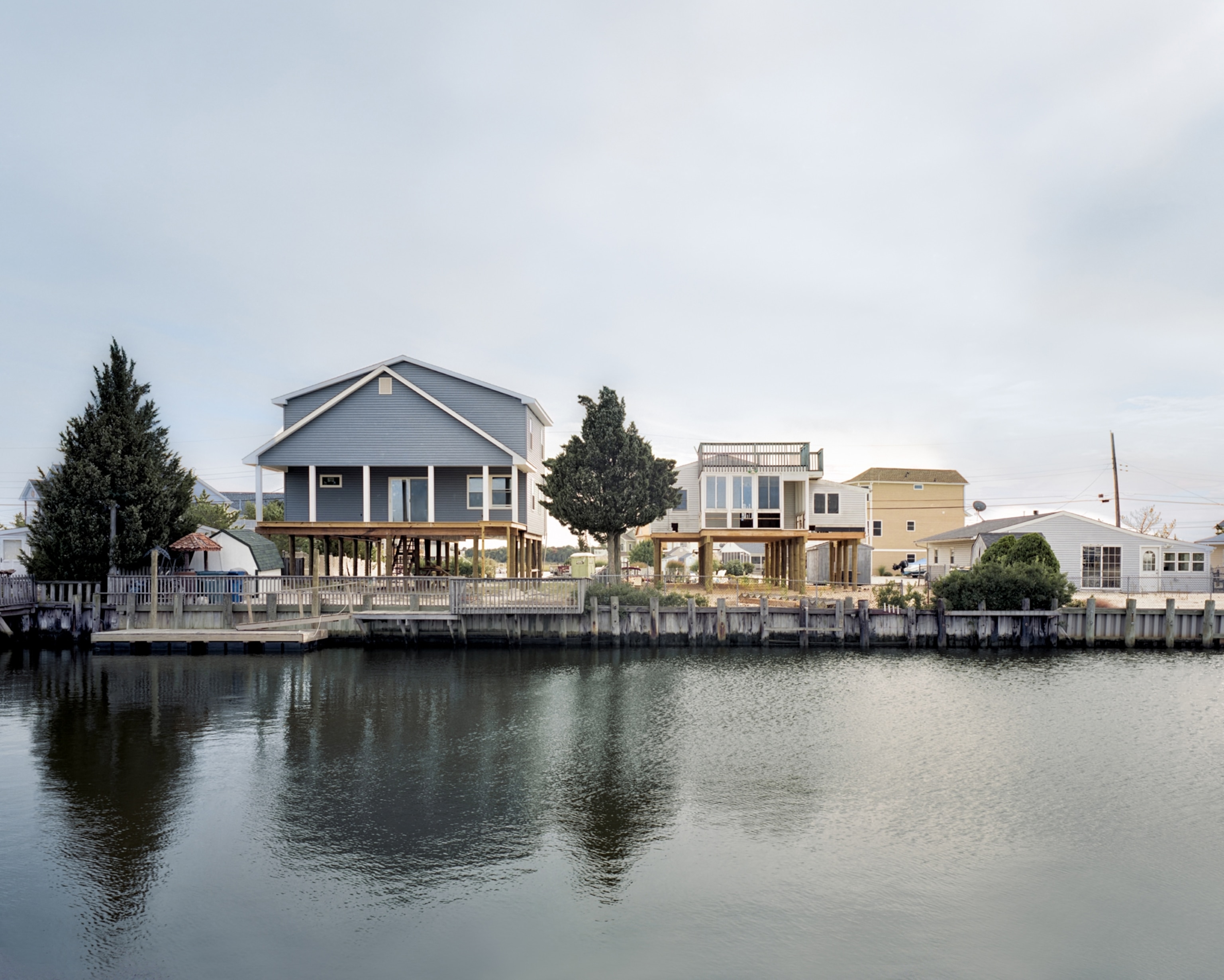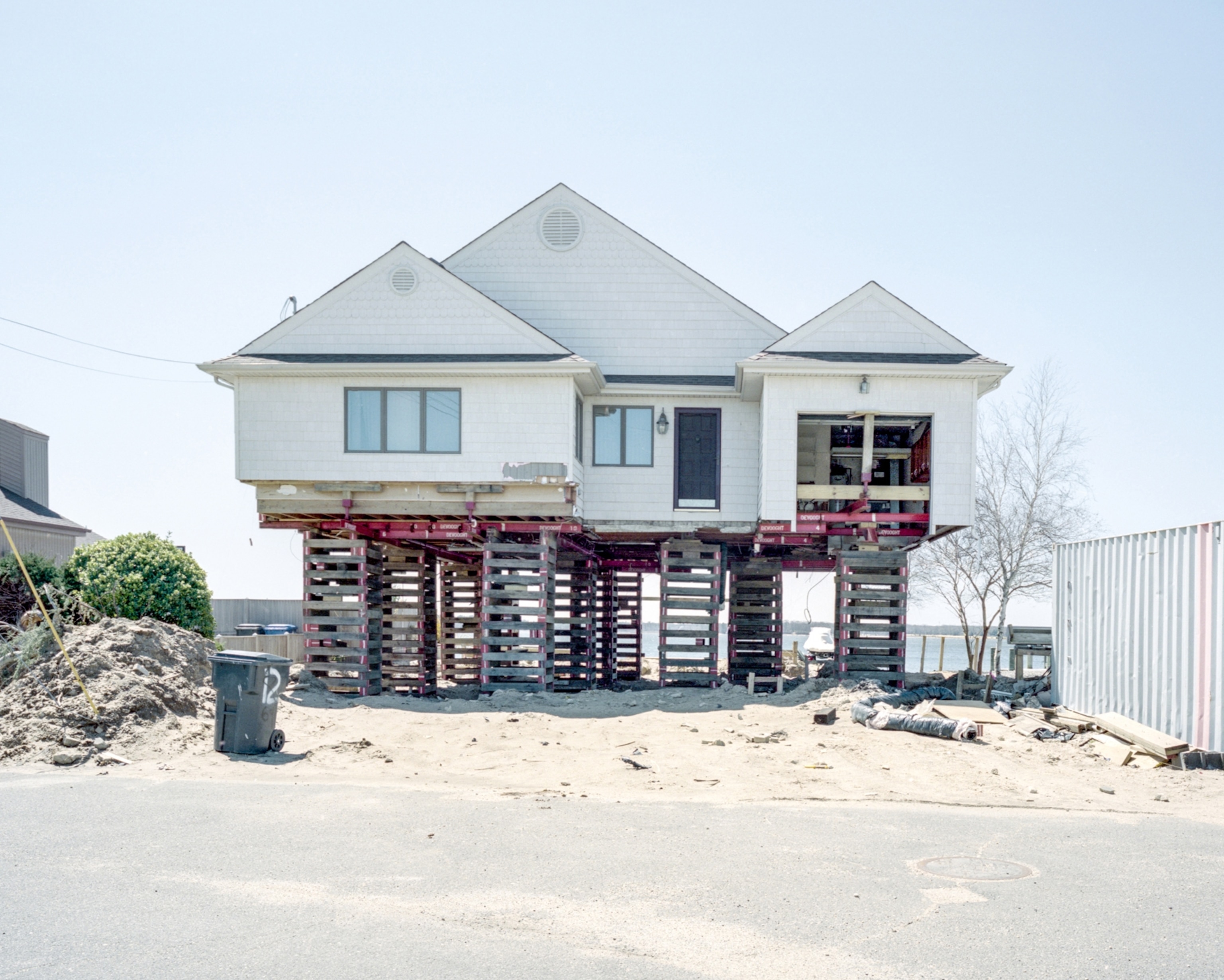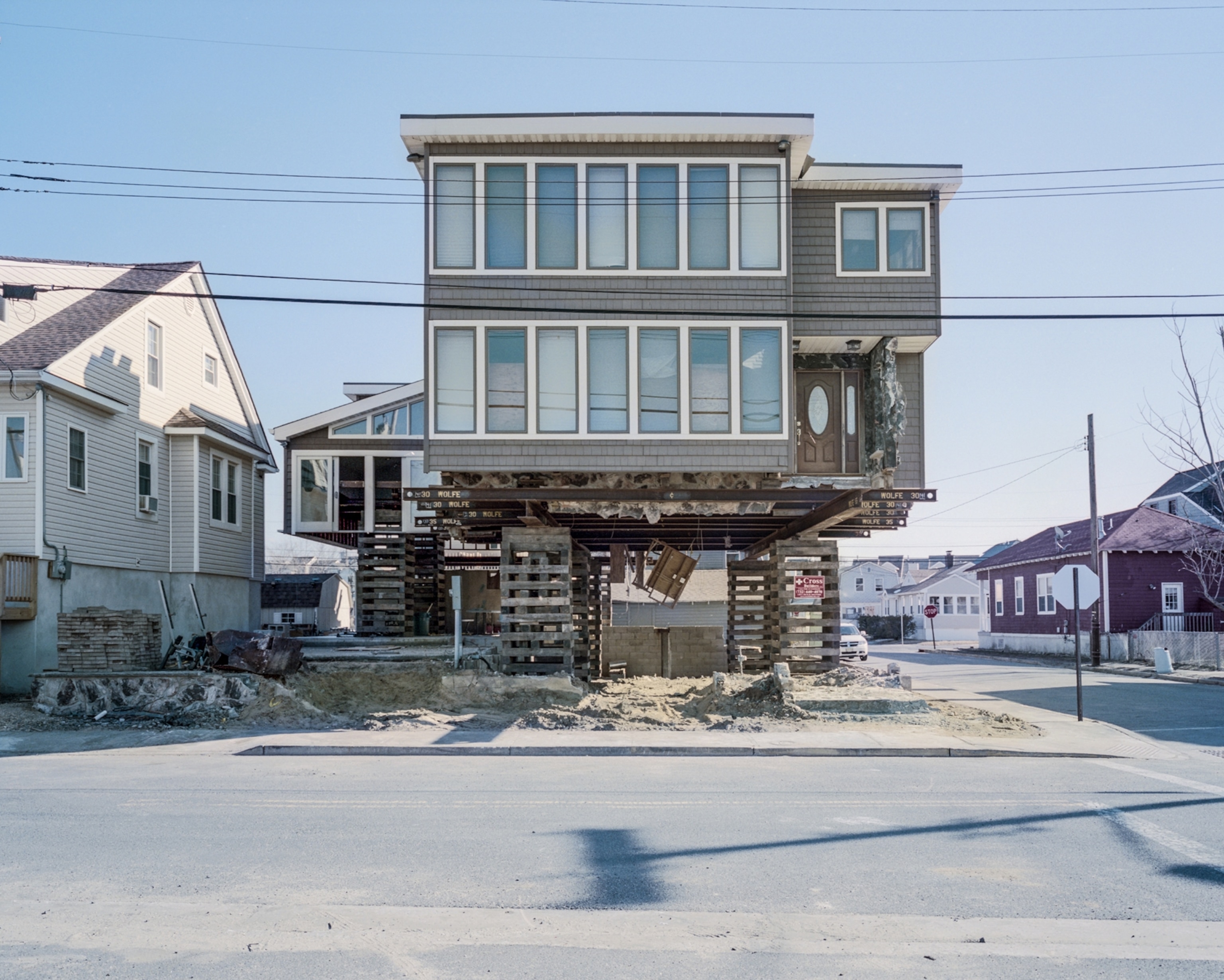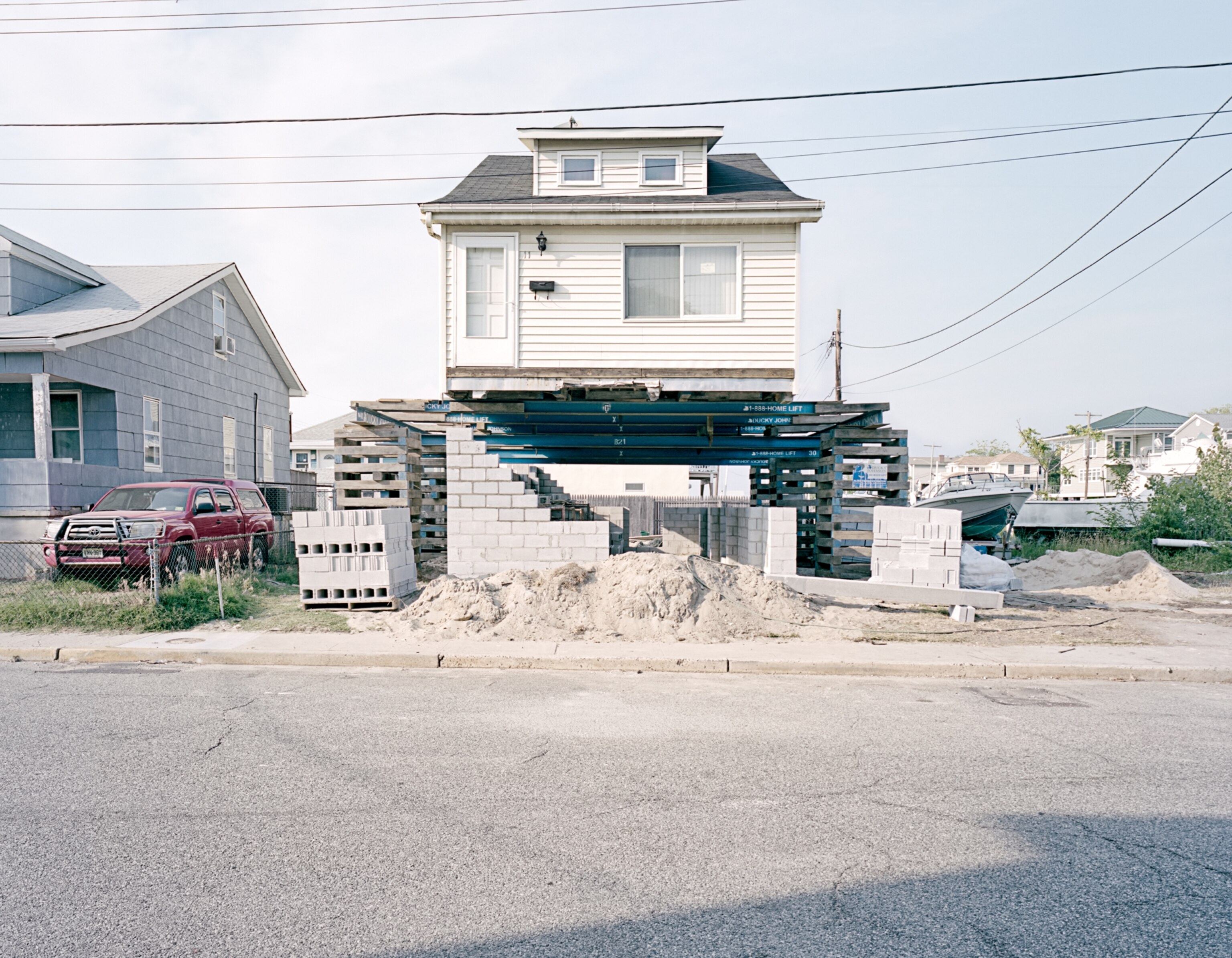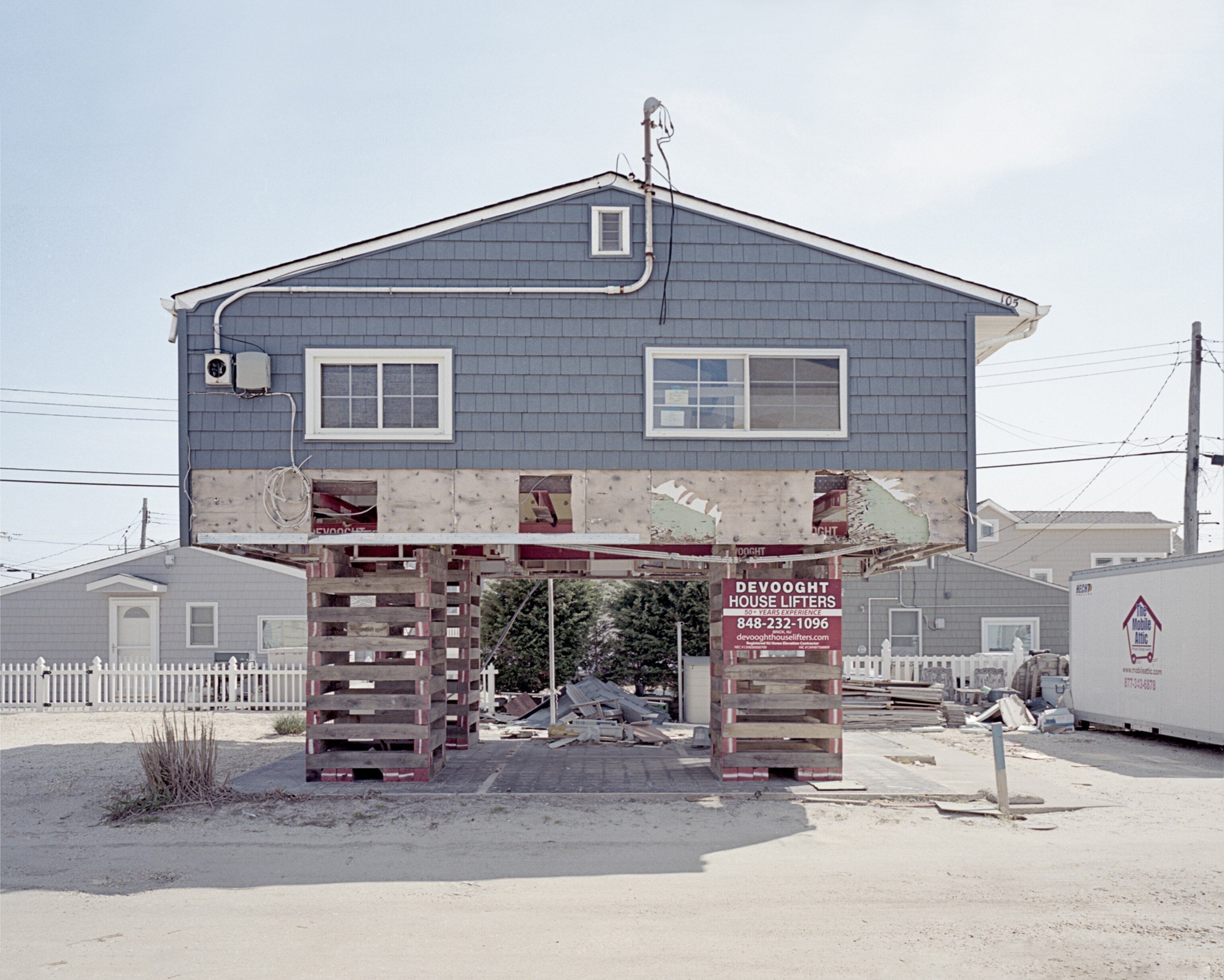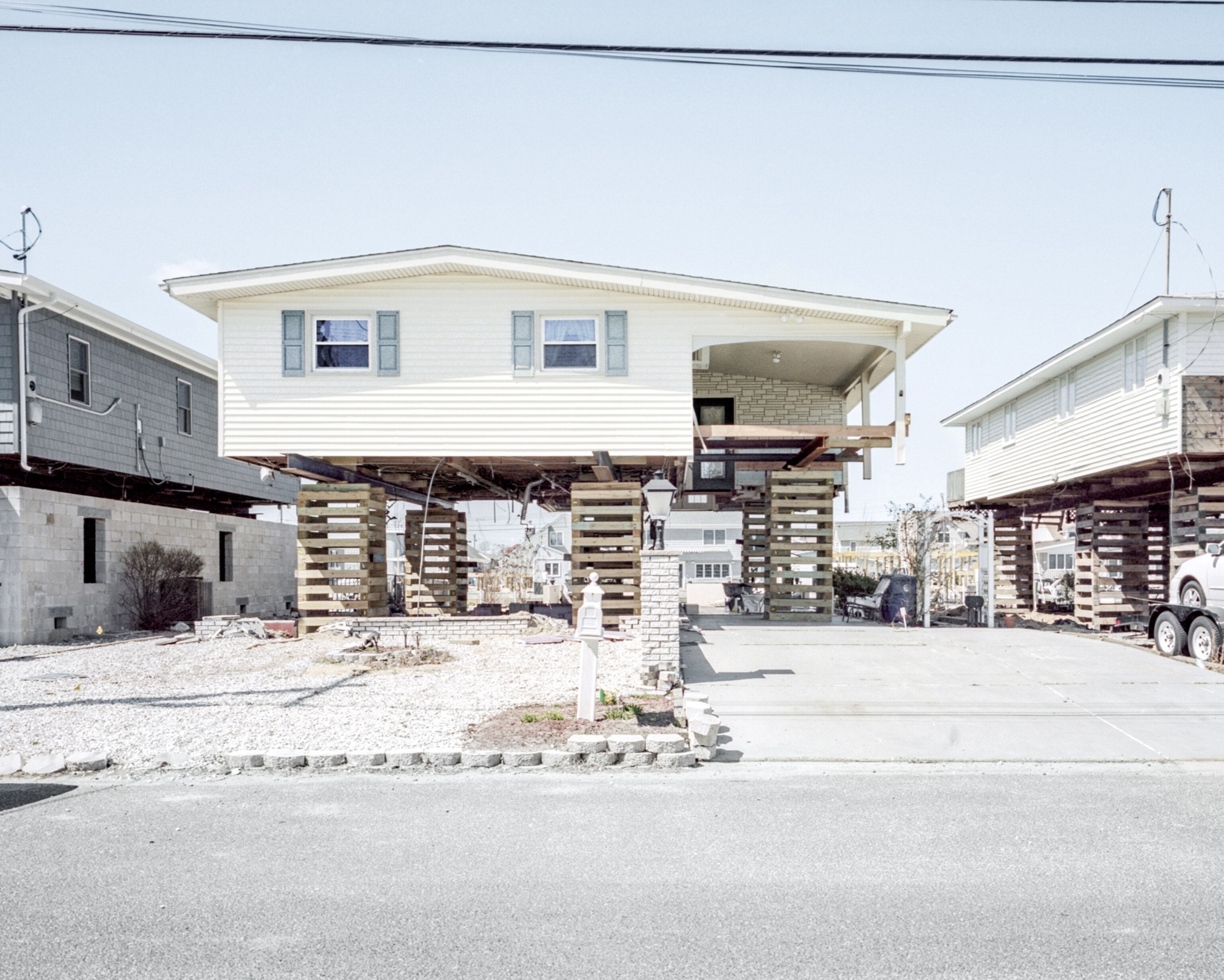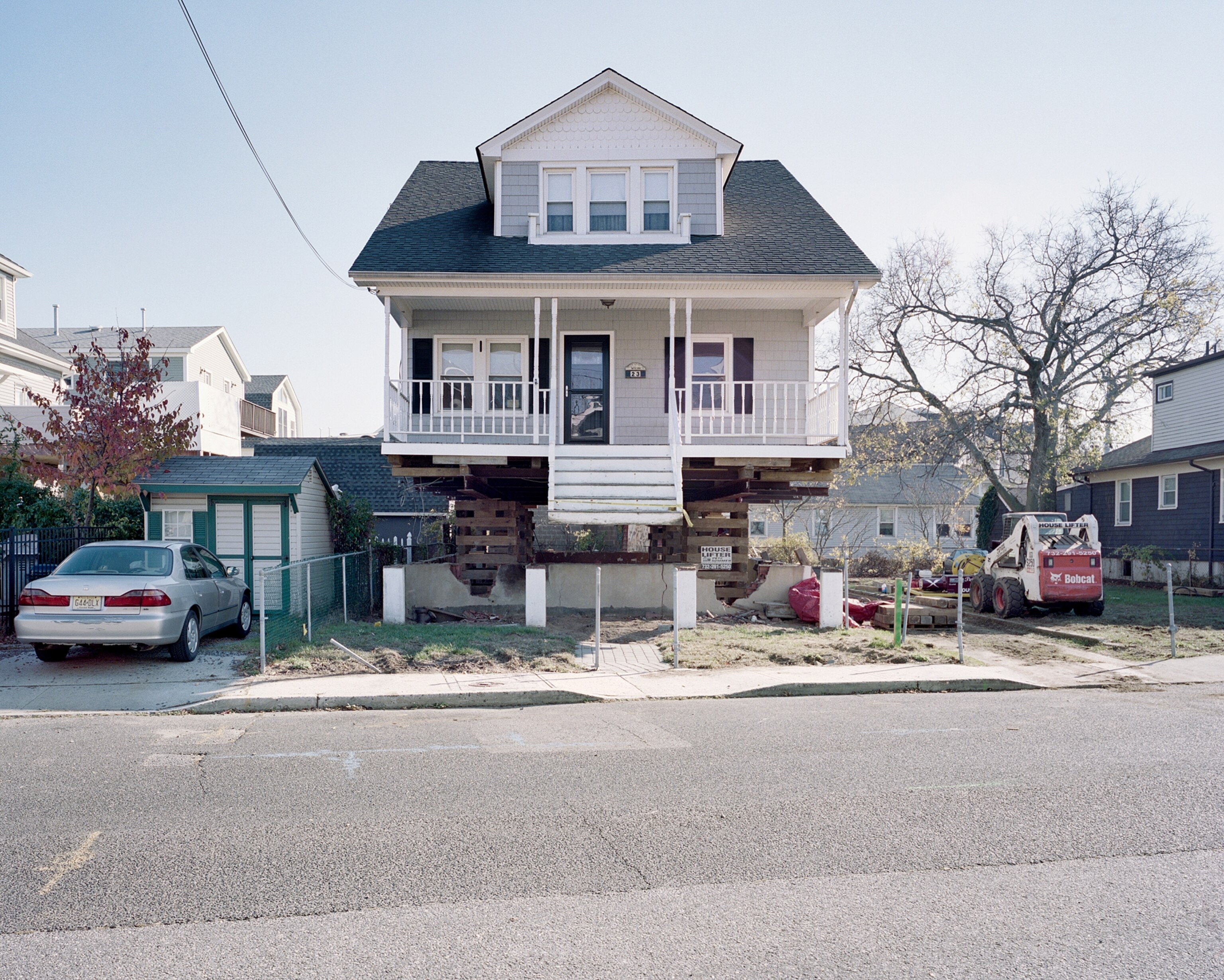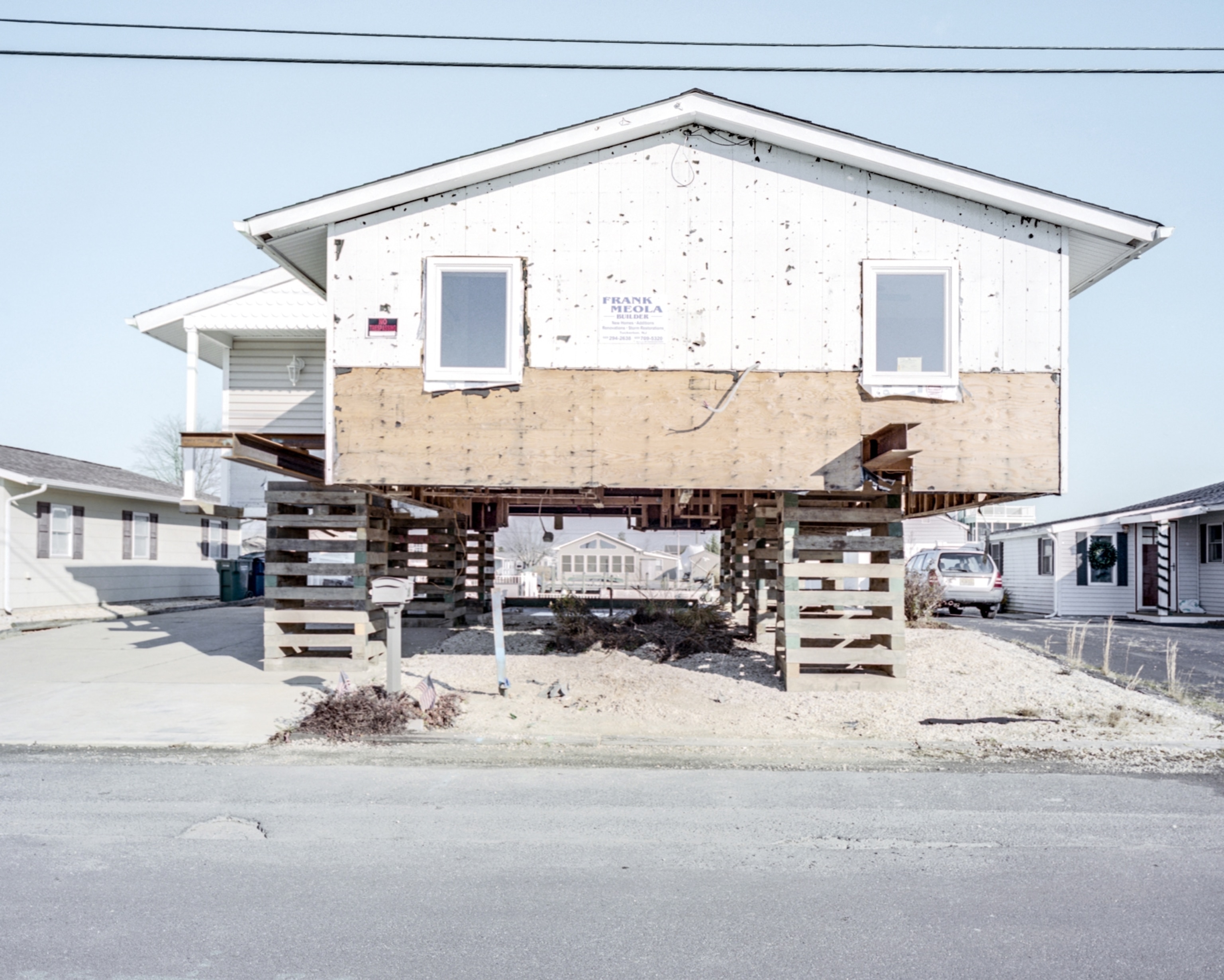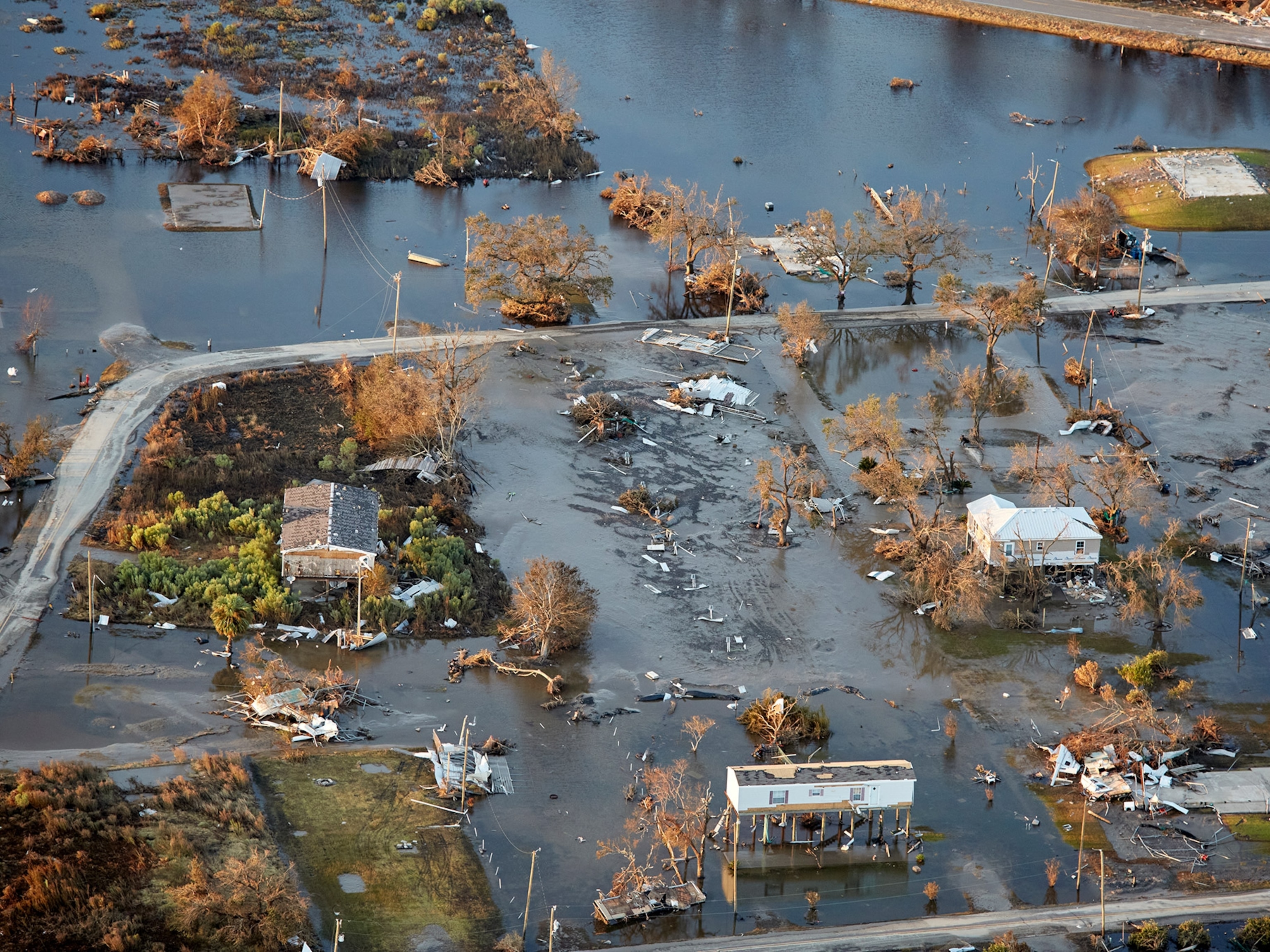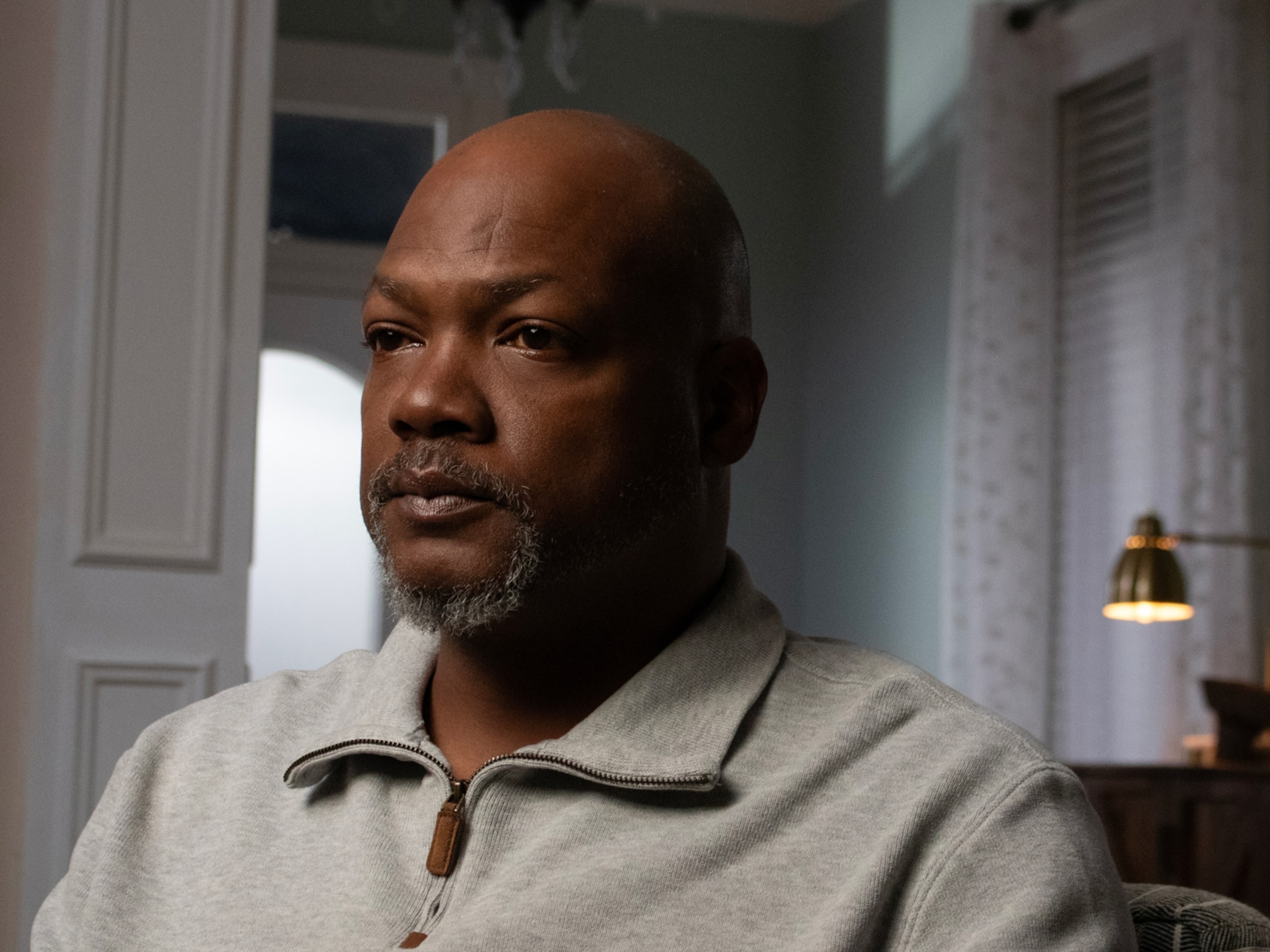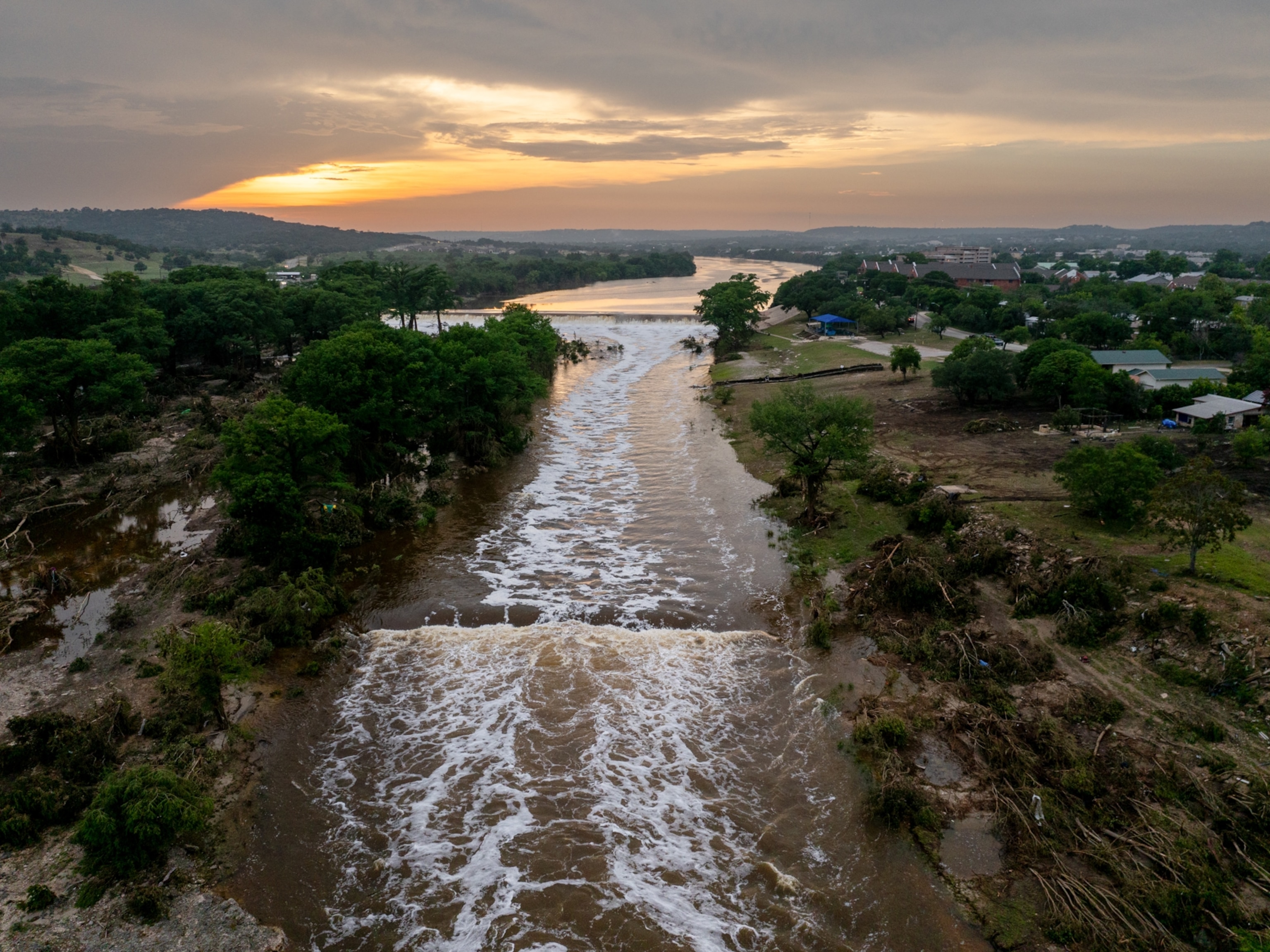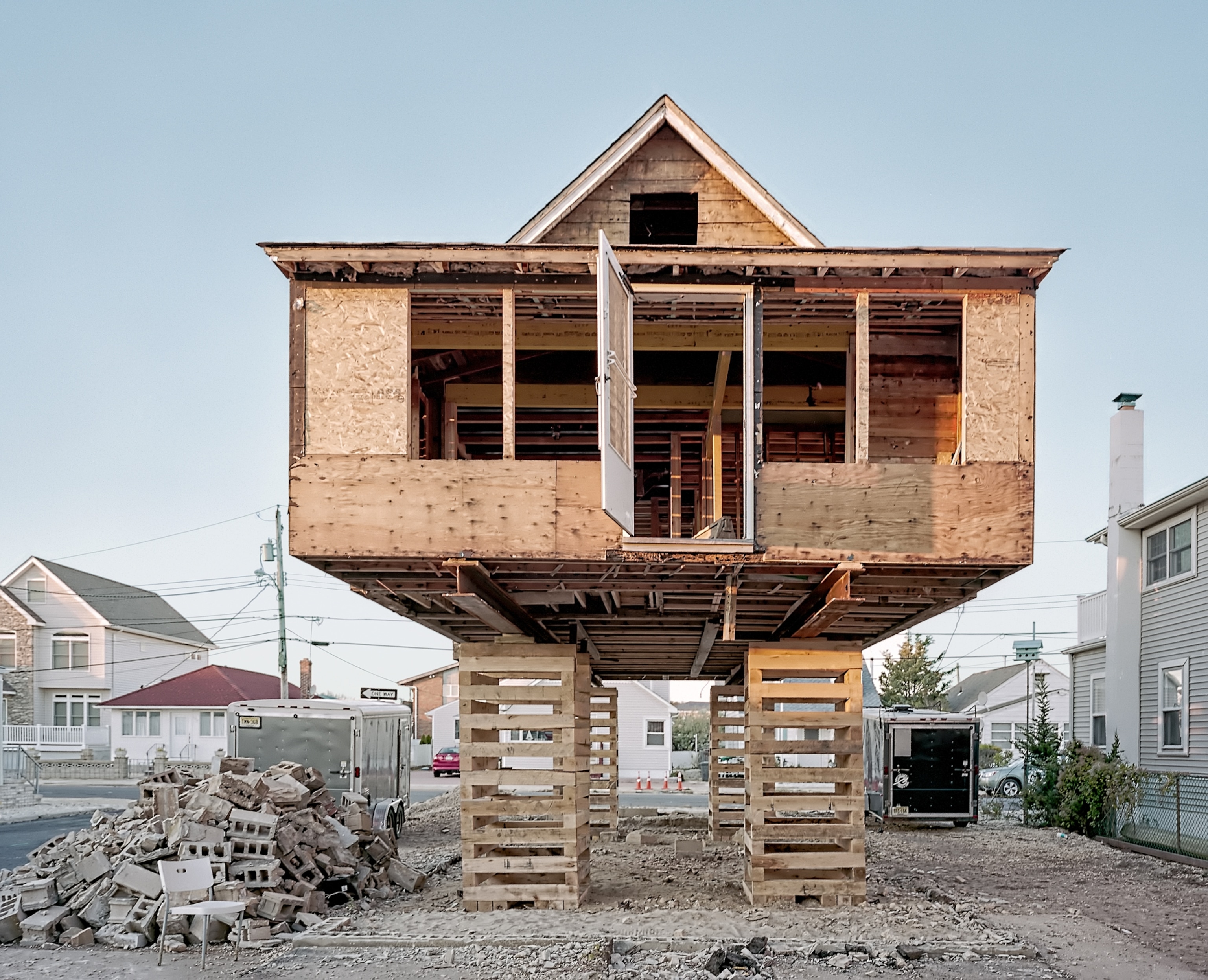
Five Years On, Superstorm Sandy Houses Rise Up
Though Sandy flooded and battered their Jersey Shore homes, many residents didn't move away—they just moved to safer heights.
Normal, simple houses designed to be at ground level take on a whole different look up in the air.
After Superstorm Sandy slammed into the New Jersey shore in 2012, people whose houses were still standing began having them raised—lifted on temporary pilings so that permanent foundations could be put in. Some did it to meet new construction codes or to reduce their flood insurance rates. But for others, I think, it was just a heartfelt bid to stay where they had sunk their roots, no matter the surroundings.

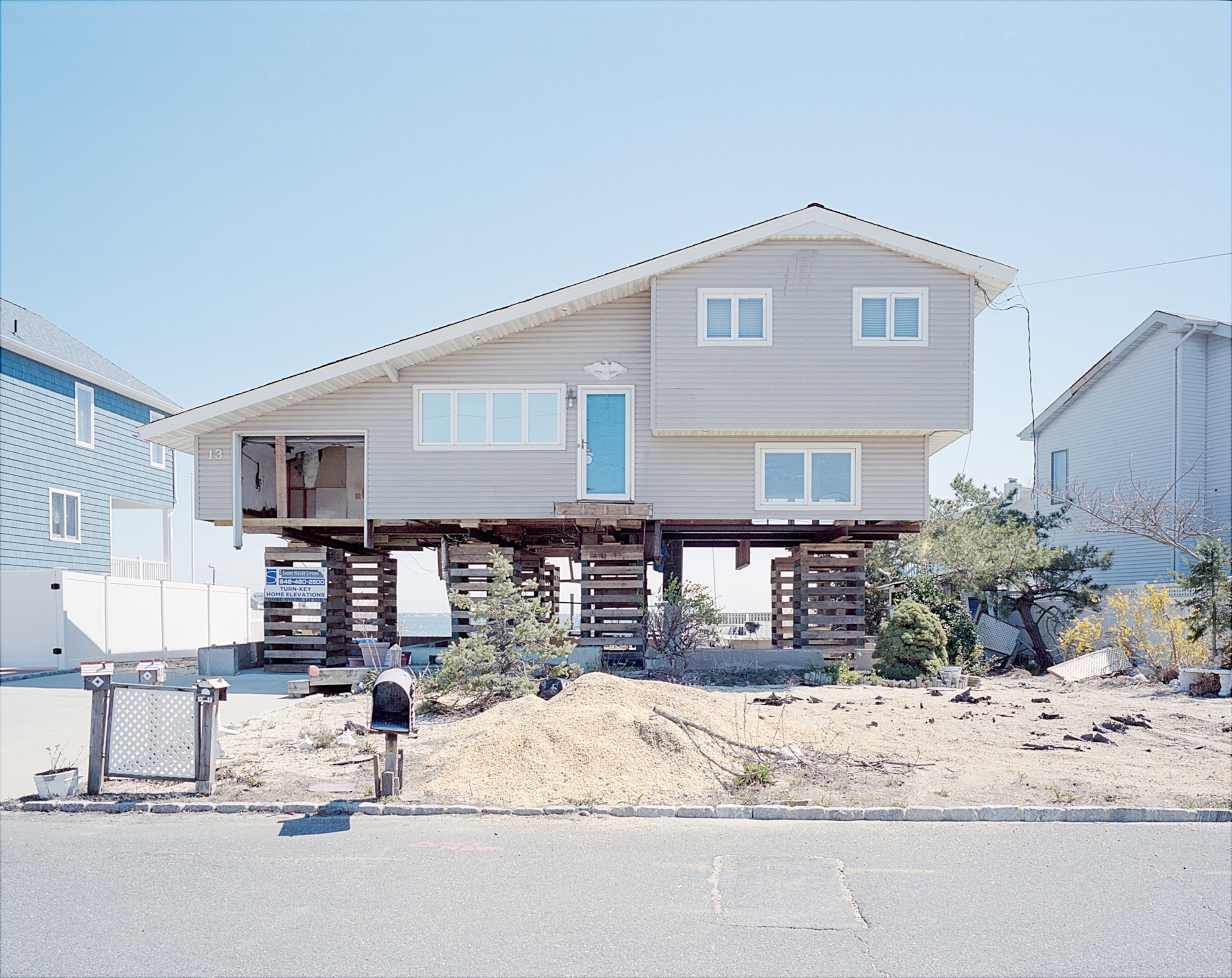
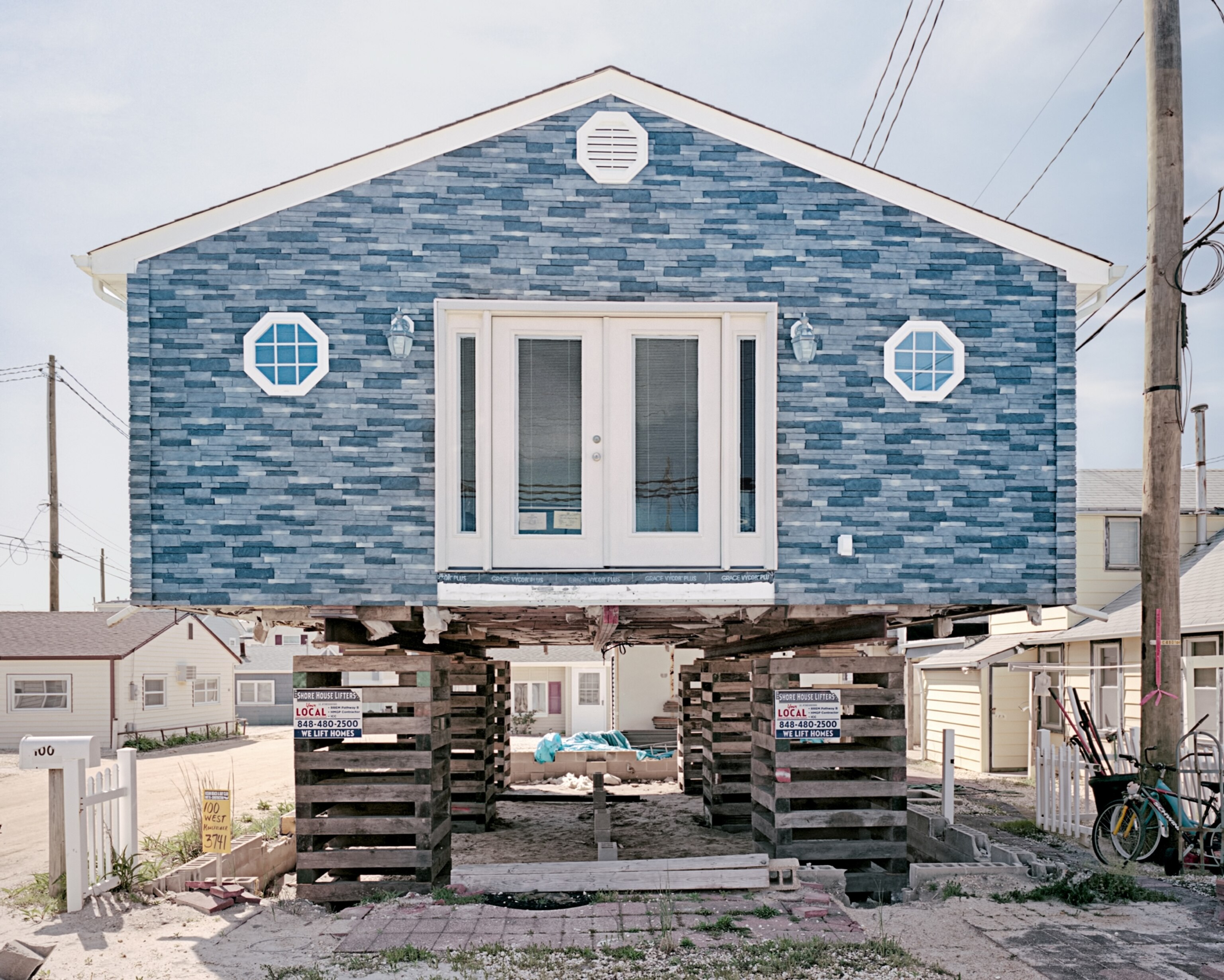
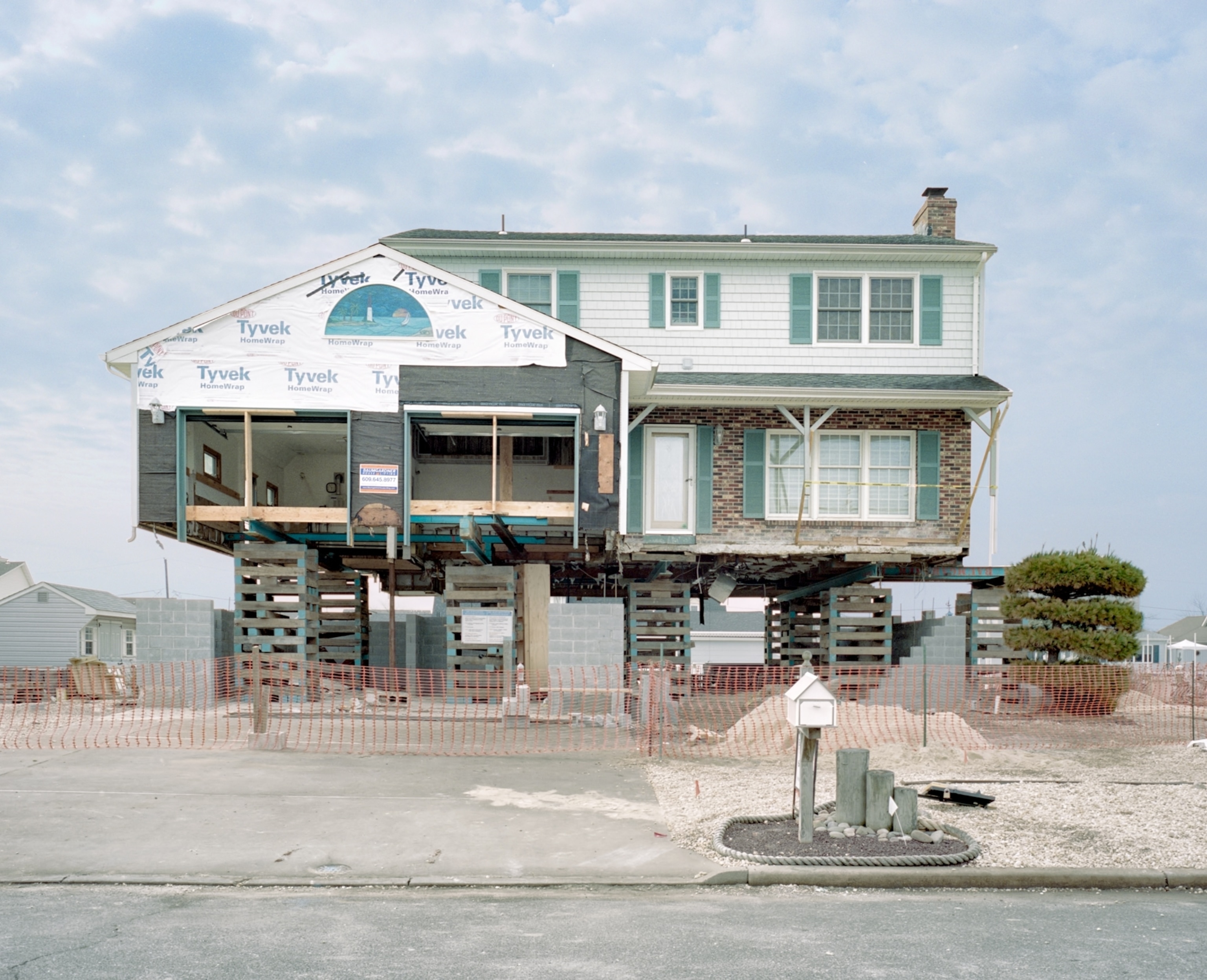
For 25 years I’ve vacationed with my family at the Jersey Shore, where beach communities are strung along 127 miles of coastline. In 2013 I began taking photos to capture the groundswell of house raisings and the strangeness of what it all looks like. We tend to think of buildings as fairly permanent—but when you see how a house can be dug underneath, lifted up, moved around, pulled, and tossed, it challenges that view.
Some homes had little Sandy damage; many had a lot. Raising a house can add as much as $150,000 to repair costs and prolong the disruption that homeowners already have endured.
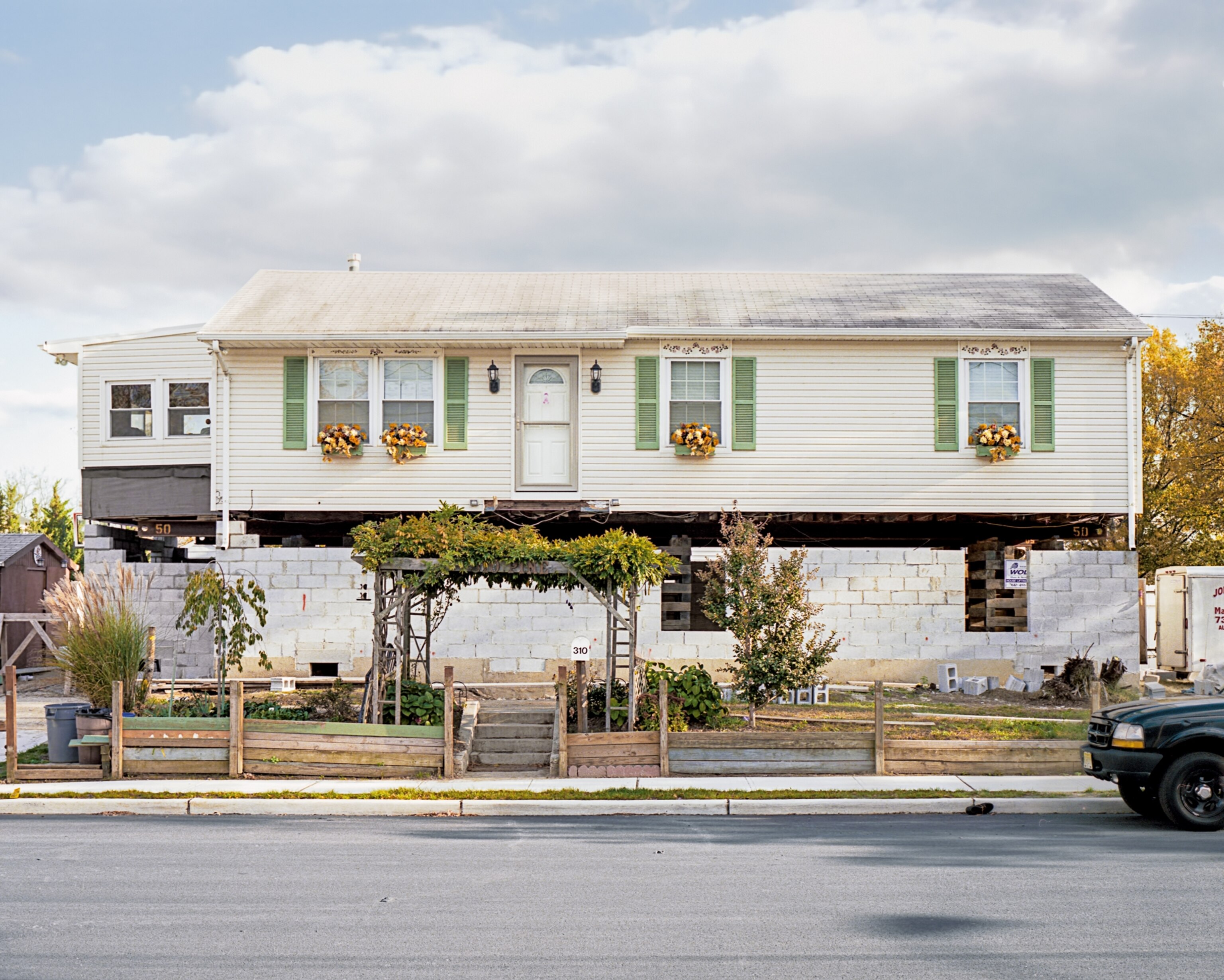
Working on this photo project has made me question the wisdom of what we’re doing. We keep rebuilding after events like Sandy—despite scientists’ warnings that in the future, climate change could make sea-level rise and extreme weather even worse. We haven’t wrestled with the bigger question of whether some locations simply are no longer safe or practical for habitation.
When big storms hit, we see dramatic pictures in real time, and they tug at us. What happens later gets less attention but is no less important: It’s the dirty, determined work of reclaiming a place and rising from the rubble.
